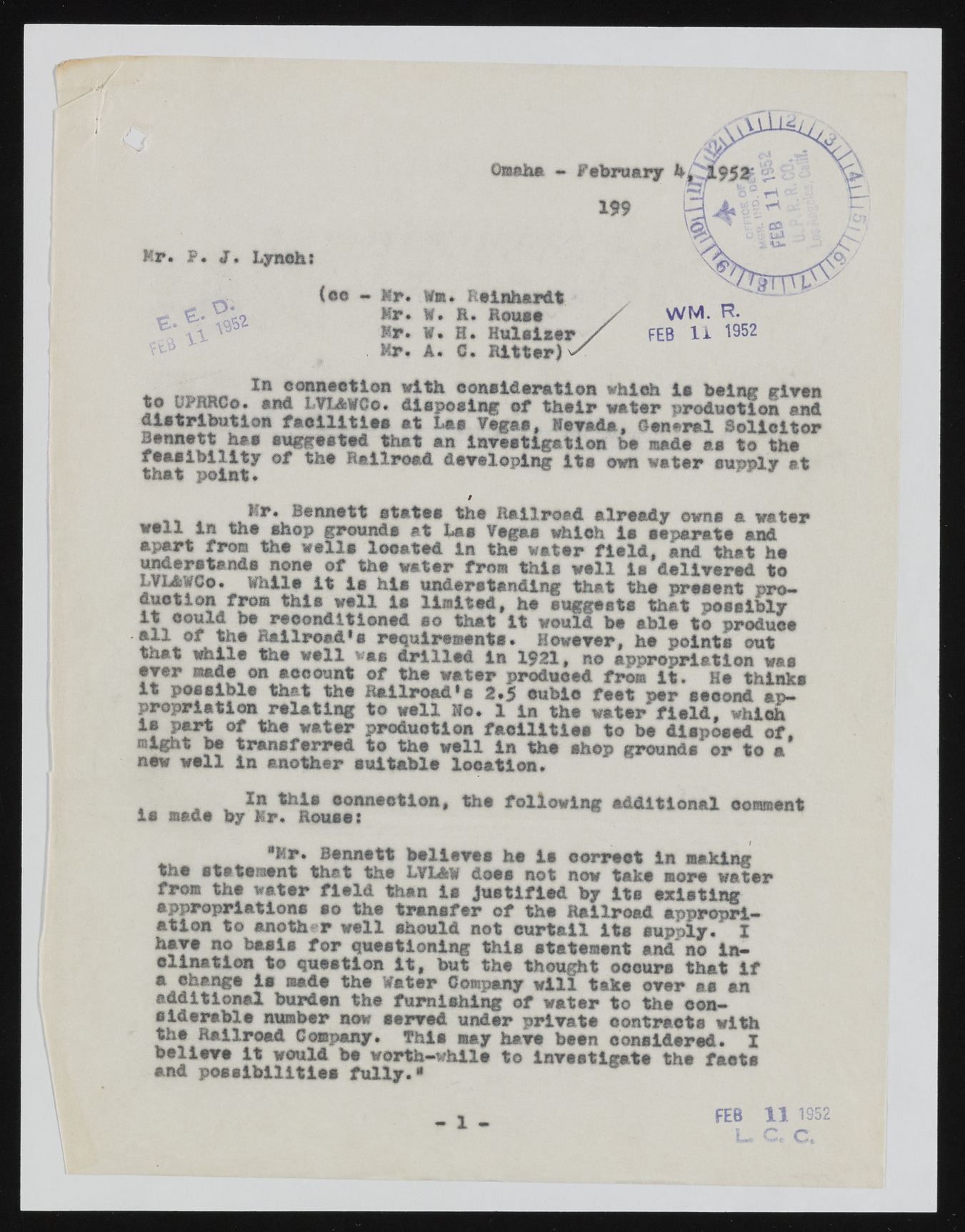Copyright & Fair-use Agreement
UNLV Special Collections provides copies of materials to facilitate private study, scholarship, or research. Material not in the public domain may be used according to fair use of copyrighted materials as defined by copyright law. Please cite us.
Please note that UNLV may not own the copyright to these materials and cannot provide permission to publish or distribute materials when UNLV is not the copyright holder. The user is solely responsible for determining the copyright status of materials and obtaining permission to use material from the copyright holder and for determining whether any permissions relating to any other rights are necessary for the intended use, and for obtaining all required permissions beyond that allowed by fair use.
Read more about our reproduction and use policy.
I agree.Information
Digital ID
Permalink
Details
Member of
More Info
Rights
Digital Provenance
Publisher
Transcription
Omaha February 199 Mr. P. J, Lynchs *+ rv>v* - Mr. Wm. helnhar&t Mr* w. R. Rouse Mr. ¥ . 1 . K ulslssr Mr. A. C. R itter)v W M . R. FEB 11 1g52 connection with consideration which is being given to UPRRCo. aj| LVLAWGo. disposing of their water production and d i s t r i b u t i o n facilities at Las Vegas, Nevada, General Solicitor Bennett has suggested that an investigation be made as to the Fjsdibility of the Railroad developing its 01m water supply at thit point* * i Hr* Bennett etatee the Railroad already owns a water well in the shop grounds at Las Vsgas which is separate and apart fro® the wells located in the water field, and that he m e r s t a n A s non* of th# vater from this wsll is delivered to LV1 A W 8 0 . While It le his understanding that the present production from t h i s well it limited, he euggeete that possibly it could he reconditioned eo that it would be able to produce all of the Railroad's requirements. However, he points out that while the well was drilled in 1921, no appropriation was ever made on account of the water produced from it. He thinks it possible that the Railroad's 2 . 5 cubic feet per second appropriation relating to wsll Ho. 1 in the weter field, which . ?***? of water production faeiliticc to be disposed of. might be transferred to the well in the shop grounds or to a new well in another suitable location. le made by IHnr .t hiRso ucsoen:nection, the following additional comment ?Mr. Bennett believes h# is correct in making the statement that the LVLAV does not now take more water from the water field than le Justified by ite existing appropriations so the transfer of the Railroad appropriation to another well should not curtail lt« supply. X have no basis for questioning this s ta te m e n t and no inclination tc question it, but ths thought occurs that if a change is made the Water Company will take over as an additional burdsn the furnishing of water to ths considerable number new served under private contracts with the Railroad Company. This may have been considered. I believe it would be worth-while to investigate the faete and possibilities fully.* - 1 - FEB 11 1352 L* C c C.

